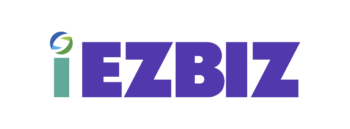E-invoicing isn’t just a buzzword anymore—it’s happening in Malaysia, and it’s happening soon. The government has already laid out the timeline, and if you’re running a business here, you’ll need to get on board. The idea is simple: digital invoices will replace the traditional paper or PDF versions we’re used to. But the reality? Many SMEs are still trying to wrap their heads around what this means for them.
The good news is, you don’t have to navigate it alone. Solutions like AutoCount are already built with features to help you comply without turning your day-to-day operations upside down. Let’s break this down in plain terms and see how AutoCount can make the transition to e-invoicing a lot less stressful.
Why the Push for E-Invoicing?
Before we dive into AutoCount, it’s worth asking—why is Malaysia pushing for e-invoicing at all?
Here’s the short answer: efficiency and transparency. The LHDN (Inland Revenue Board of Malaysia) wants to make tax reporting smoother, reduce fraud, and bring the country’s business ecosystem up to speed with global digital standards. Think of it as a way to keep everyone playing by the same rules while also cutting down on paperwork headaches.
That said, for SMEs, this shift can feel intimidating. Compliance usually comes with extra costs, training, and plenty of “what ifs.”
That’s where the right accounting system like AutoCount, comes into play.
AutoCount: More Than Just Accounting Software
AutoCount isn’t just about crunching numbers—it’s designed with SMEs in mind. It helps you handle everything from sales and purchases to payroll and inventory. But the real kicker in 2025? Its e-invoicing features.
Instead of worrying about whether your invoice formats meet LHDN’s requirements, AutoCount automates the process. It can generate invoices that are already compliant, send them directly to customers, and even sync the data for your records. In other words, less manual work, less chance of errors, and more peace of mind.
How AutoCount Helps with E-Invoicing
Here’s where things get practical. If you’re wondering, “Okay, but how exactly does AutoCount help me with compliance?”—here are a few points worth noting:
- Built-in LHDN compliance – AutoCount makes sure your invoices follow the e-invoicing format required by LHDN. No guesswork.
- Seamless submissions – You can send invoices straight through the system, which reduces delays and paperwork.
- Audit-ready records – All invoices are stored and organised, so if LHDN ever asks for documentation, you’re ready to go.
- Integration with your operations – Already using AutoCount for accounting, payroll, or inventory? The e-invoicing feature integrates neatly without forcing you to juggle multiple platforms.
Preparing Early Pays Off
The timeline for e-invoicing is already in motion:
- June 2024 – Mandatory for large taxpayers.
- January 2025 – Medium-sized businesses need to comply.
- July 2025 – All other businesses, including SMEs and microenterprises, must be on board.
If you’re an SME, you might be tempted to wait until July 2025. But here’s the thing—scrambling at the last minute rarely ends well. By preparing early, you give your team time to adapt, train, and get comfortable with the system before the deadline. Plus, you’ll avoid the stress of rushing implementation when everyone else is trying to do the same.
The Bigger Picture
Switching to e-invoicing may sound like just another compliance burden, but it could actually benefit your business in ways you haven’t considered:
- Faster invoice processing means quicker payments.
- Digital records make cash flow tracking easier.
- Less manual work reduces staff workload and frees them up for more productive tasks.
AutoCount essentially turns what feels like an obligation into an opportunity. Instead of viewing e-invoicing as just another rule to follow, you can see it as a chance to modernise your operations and stay ahead of competitors who are slower to adapt.
Wrapping Up
The mandatory e-invoicing timeline in Malaysia isn’t something businesses can ignore. It’s coming, and compliance is non-negotiable. But with tools like AutoCount, the transition doesn’t have to be complicated. By starting early, leaning on automation, and training your team ahead of time, you can make e-invoicing feel less like a burden and more like a step forward for your business.
So, the real question isn’t “Do I have to switch to e-invoicing?”—because the answer is yes. The question is “How smoothly do I want that transition to be?” If you want the process to be hassle-free, AutoCount is worth considering.


